The Mid-Century Modern Landscape is the title of my recent book. It’s rather misleading because it’s about gardens: I’m old school and I think of landscape as the natural surroundings in which we build or shape our dreams: The Parthenon is set in a dramatic landscape; my greenhouse is part of my garden. Oh, well, different words mean the same thing to different people. Case in point, a recent book came to my desk for review; a darling landscape(!)-shaped volume that would squeeze into a back pocket. Titled How to Window Box; small-space plants to grow indoors or out. Created by Chantal Aida Gordon and Ryan Benoit, it details in easy approachable steps how to container garden in a variety of locations, make fun containers, and explore the world of plants indoors, or outdoors if that’s your fancy.
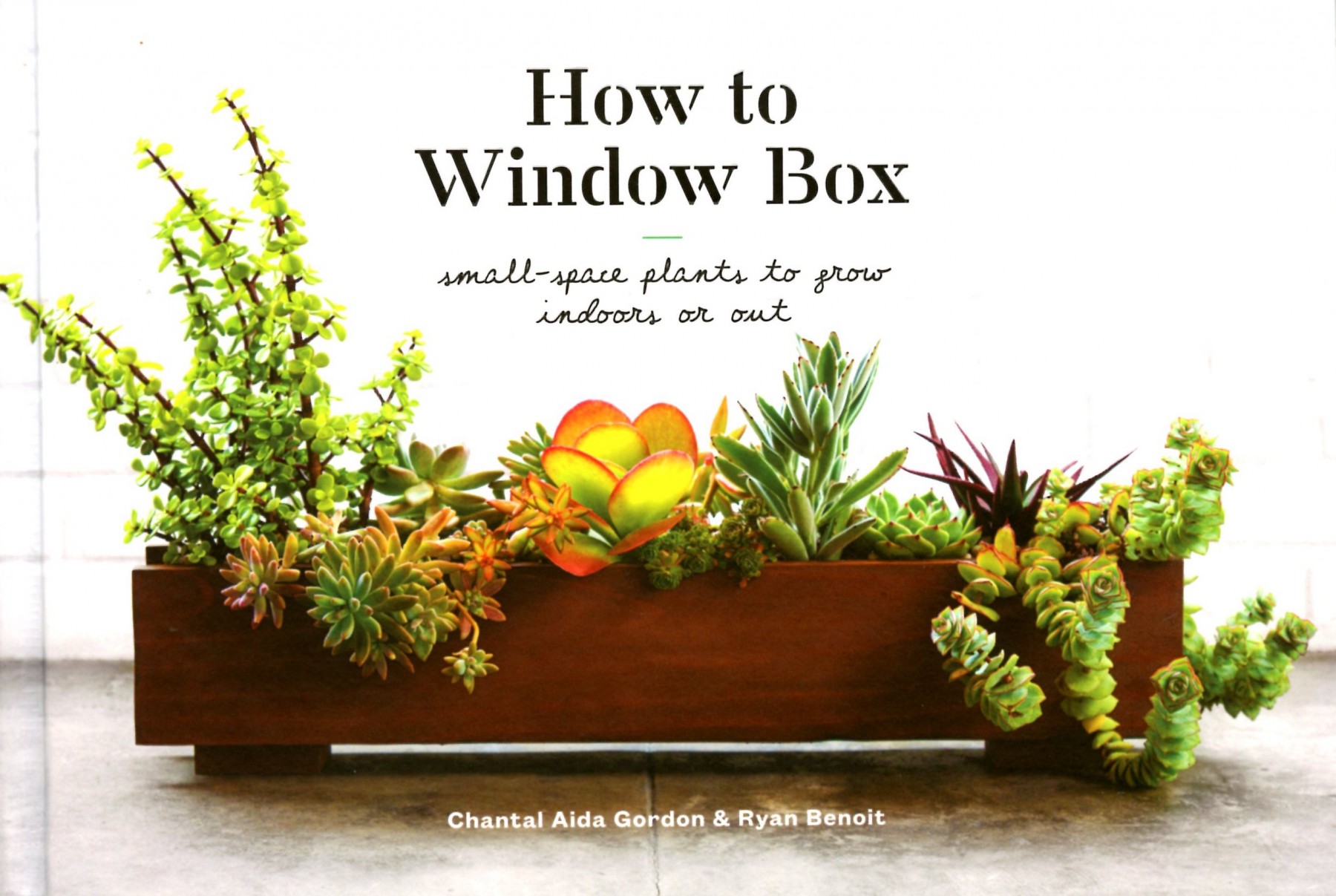
It’s a tad misleading because in their enthusiasm they’ve included some plants that are far from small-space, and that I would definitely lump in the category Giant Tropicals. But really, it hardly matters, because the bigger the plants get, the more fun you can have either finding ways to accomodate them or new homes where they will be welcome. In the section “The Jungle Box” the authors write, “Tropical species that you associate with far-flung vacations can be easily enjoyed without leaving your house—even when you’re snowed in.” Which, as I write, I am. It’s 17F and snow is six inches deep. The Front Range of the Rockies is far from tropical. Yet I am encouraged by this book to think of how the windows in my mid-century modern ranch house could be made greenhouse-plant friendly with the simple boxes the author have invented, and the easy to follow maintenance and hort practices they advise. I won’t try herbs or leafy veg – I’ve been there done that without success. But I can see how Elephant’s Ear (Alocasia ‘Polly’), Swiss Cheese plant (Monstera deliciosa) and a couple of other plants – like a rubber tree or a mother-in-law’s tongue would really expand my décor.
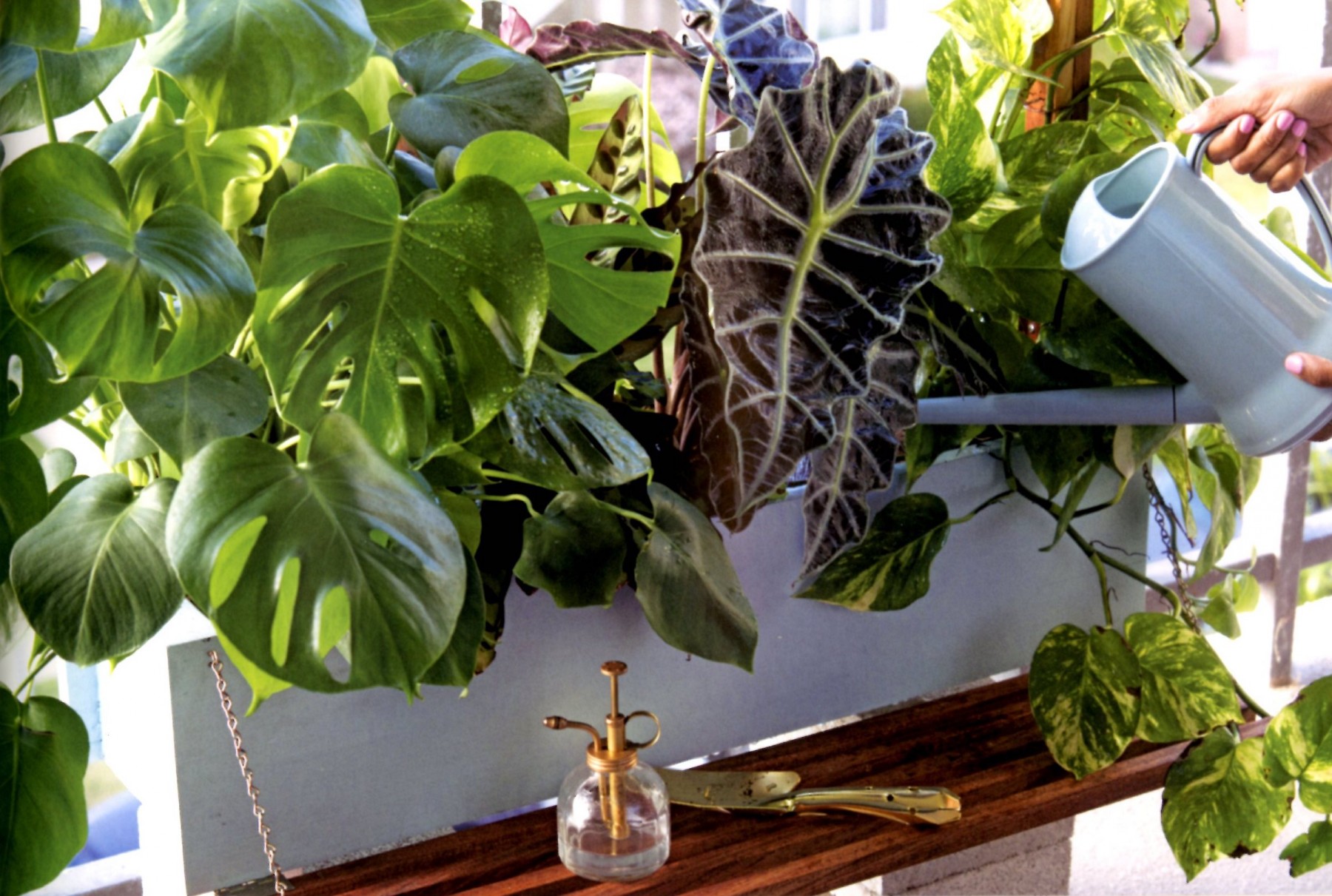
Mid-century homes were filled with plants. Anything with a big, bold leaf, statuesque form or unusual variegation was top choice. Unsurprising when you regard the architecture of the period—all those swooping rooflines, expanses of glimmering glass. In the temperate climate of southern California, houses nearly disappeared behind curtains of sub-tropical foliage. Indoors was no different, and planters were often built into the floor so that the jungle effect carried into the house; it was all part of the aesthetic of the times–blurring the boundaries between exterior and interior went hand-in-hand with sliding glass walls that opened onto accommodating patios. One of the best examples I discovered of this interior feature is shown below.
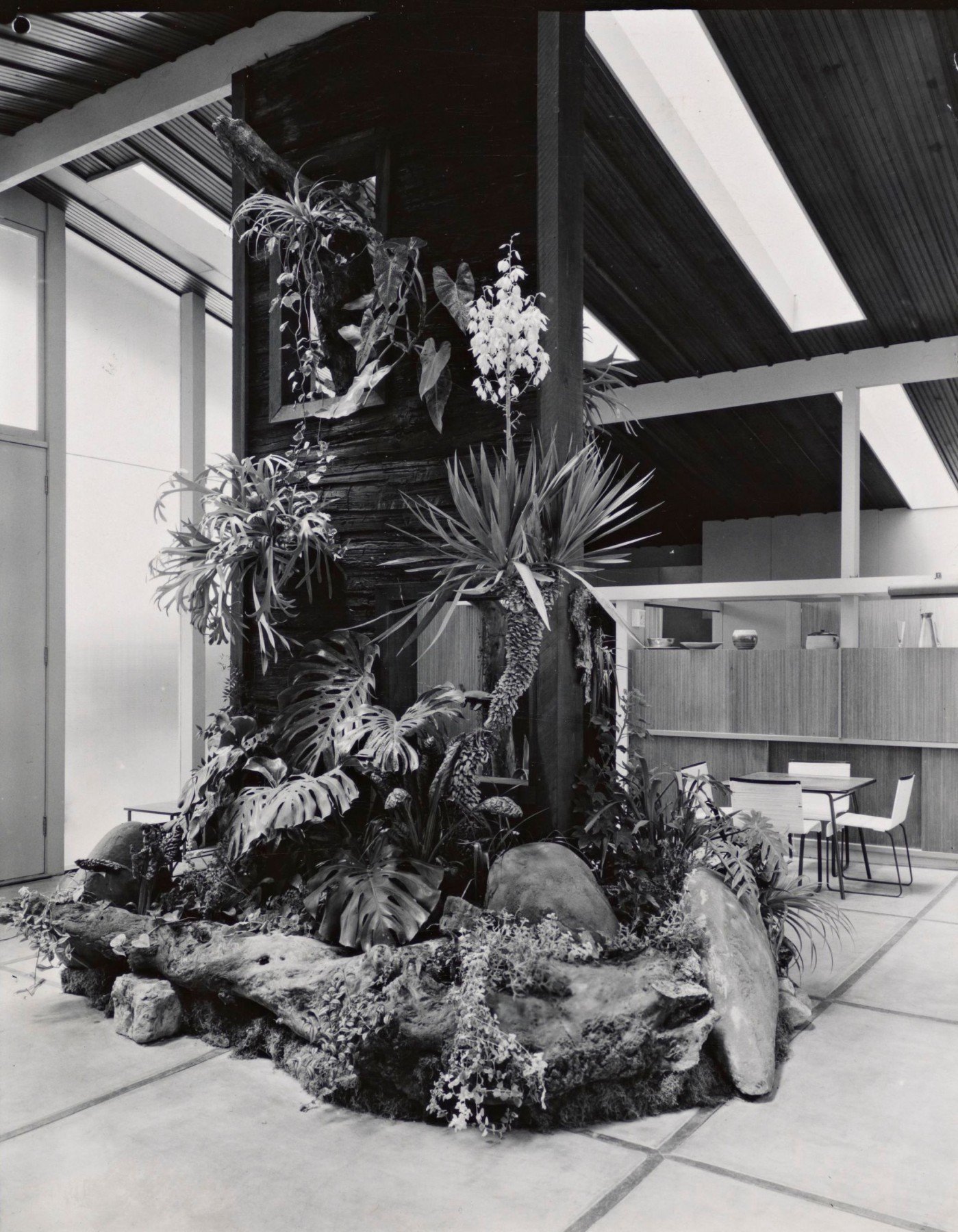
The book this image and one below are taken from is titled Pictorial Plant Guide for Mild Region Landscaping, illustrated by the photographer Paul Peart. He was one of the photographers favored by architects and garden designers like Joseph Eichler, Cliff May, Thomas Church and Garrett Eckbo, so he had access to some of the period’s best examples of home and gardens.
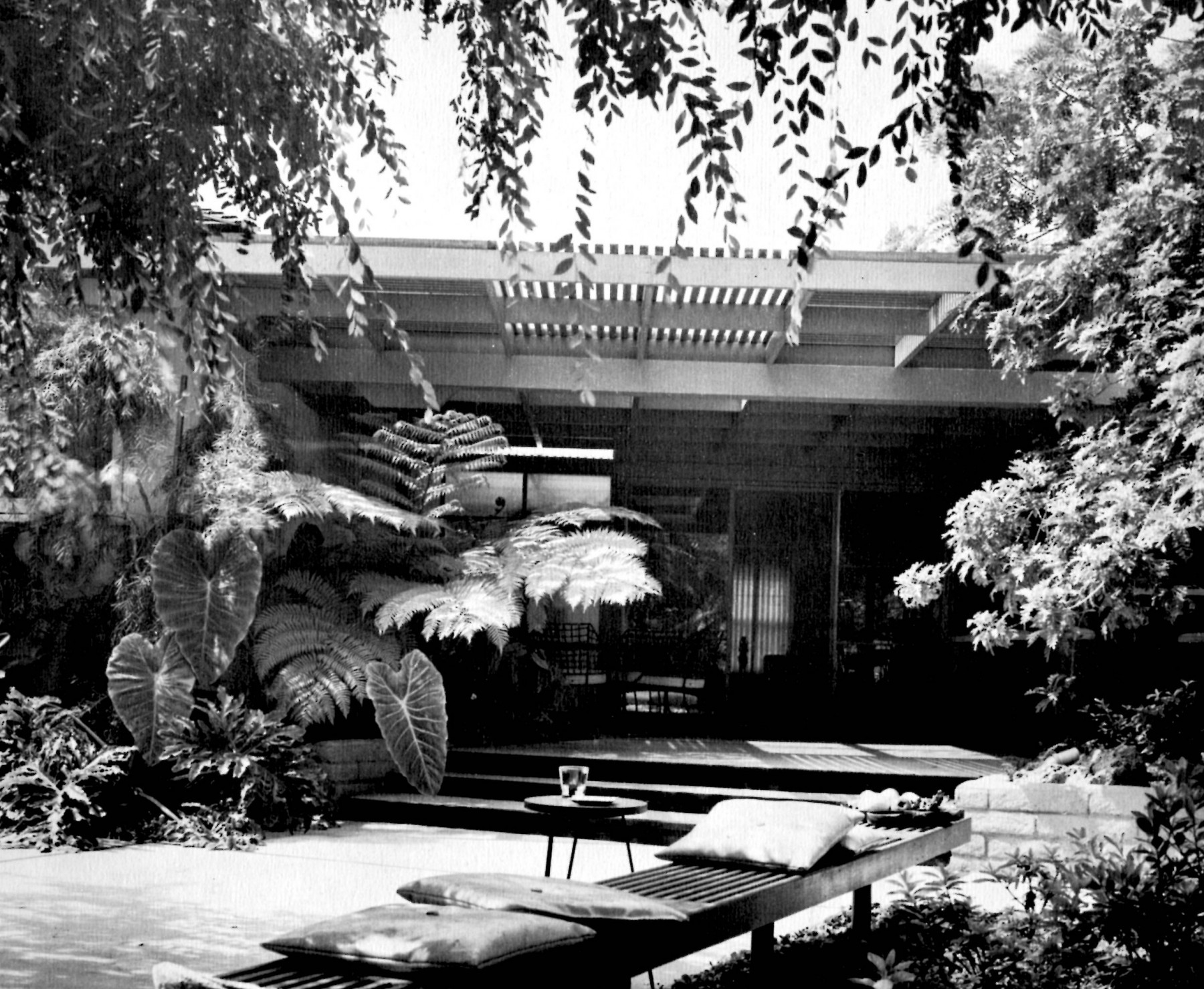
If you’re creating a garden for a renovated mid-century house, or simply want a domesticated jungle for a garden, and are looking for inspiration, search out this book. Your plant-shopping list will inevitably include these period classics:
Musa ensete (Abyssinian banana)
Monstera deliciosa (Swiss cheese plant)
Melianthus major (Honey bush)
Colocasia esculenta (varieties and cultivars)
Cyathea australis (Australian Tree Fern)
Philodendron barryi, and P. selloum (Cutleaf philodendron and Tree philodendron, and others)
For further inspiration that is right out of the gate, pay a visit to Seattle where Amazon’s Spheres has just opened to archi-horticultural acclaim. Riffing on Buckminster Fuller’s geodesic domes, glass bubbles crammed with tropicals have that nifty city something new to brag on, and deservedly so; it embodies all the verve of the futuristic daydreaming of the mid-century “Mad Men”.
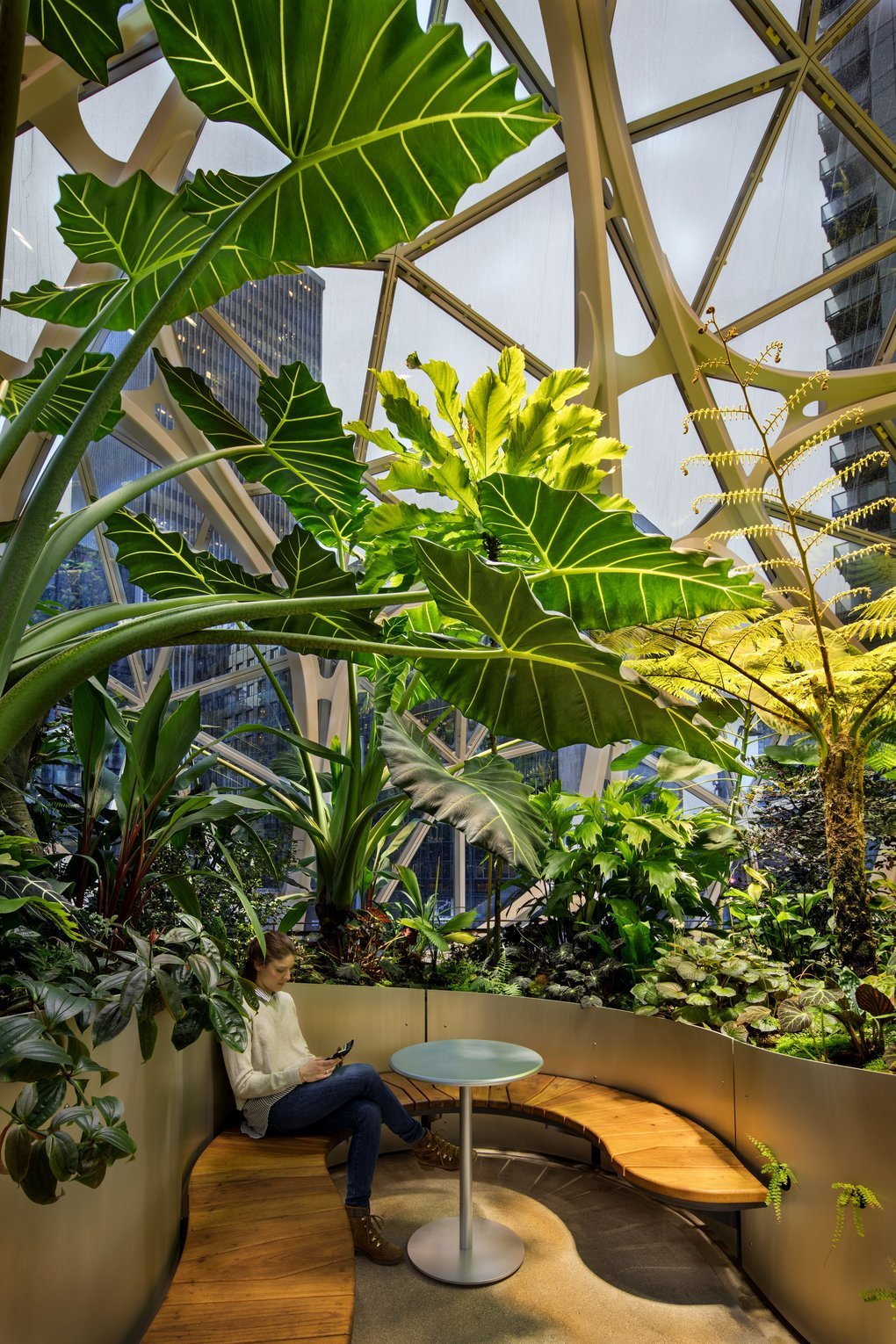
©Ethne Clarke, 2017










